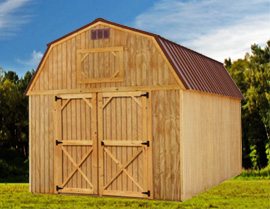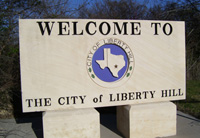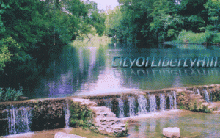Please
complete our quick and easy online
application and
we will
call you to verify and schedule your
delivery.
NO
credit check! Easy, Rent to Own!
Lakeway Portable Buildings - Derksen
Buildings Lakeway,
Texas

Zipcode: 78734
Lakeway is a city in Travis County, Texas, United States. The population was 11,391 at the 2010 census; up from 8,002 in 2000. The city is located near Lake Travis. [citation needed] It is an exurb in Greater Austin. Wikipedia
City of Lakeway, Texas - Click here for the City website!
Lakeway is a unique, prestigious, growth-managed community with a full-service city government. The City provides police, court, building and development, parks and recreation, streets and drainage, and solid waste management services. Lake Travis Fire Rescue (Travis Co. ESD #6) provides fire suppression and emergency medical response, and municipal utility districts provide water and wastewater services. The Lakeway City Charter establishes a council-manager form of government. The mayor and six council members are elected at-large, and serve as the legislative body of the city. The city manager reports directly to the city council and administers the day-to-day affairs of the city, implementing the policies established by council and ensuring that the city operates in a fiscally responsible manner. The City's primary sources of revenue are property tax, sales tax, and franchise fees.
The City of Lakeway began as a retirement and second-home community. Now, families are drawn to the “lake lifestyle”, the city’s award-winning parks and recreation programs and facilities, and Lake Travis ISD’s renowned schools. Active empty-nesters and young professionals are attracted by the city’s natural beauty, proximity to Austin and endless recreational activities including tennis, golf, hiking, biking, picnicking and camping, fishing, boating, swimming, and scuba diving. Lakeway residents are active in their community, taking great pride in the city and its unique history.
Well-managed growth is the hallmark of this upscale lakeside community. The 2010 U.S. Census population was 11,391, up from 8,002 in 2000. The city’s commercial corridor encompasses Ranch Road 620, near the city's eastern boundary. The area's largest employers include the Lake Travis Independent School District, the Lakeway Resort and Spa, and the newly constructed Lakeway Regional Medical Center. According to 2010 U.S. Census, the 2006-2010 median household income in Lakeway was $96,771--nearly twice that of the state of Texas as a whole. The estimated median housing value for the same period was also higher--$362,800 compared to $123,500 for Texas. Schools in Lakeway rate among the best in the country. In 2011, the school district was rated "Exemplary" by the Texas Education Agency. More than 78% of the district’s graduating students go on to college after high school. The Lake Travis ISD operates one high school, two middle schools, and five elementary schools. There are several colleges within 20 miles of Lakeway, including the University of Texas at Austin, Saint Edward's University, Austin Community College, and Concordia University.
Providing a soothing contrast to the rapidly growing Austin metro area, Lakeway is a community you can choose to visit on weekends, or live in full time. Lakeway offers a relaxing “lake lifestyle” and the opportunity to live and work where you play.
A shallow ocean covered the Texas hills millions of years ago and left limestone deposits containing varied forms of ancient plants, animals and marine life. Evidence of this geological evolution are the gastropods and molluscan fossils found along street banks and gullies of Lakeway after a heavy rain.
Whether of ancient days or more recent times, these native people are called Indians and their former campsites are known as Indian mounds.
Many Indians occupied the area from the present Inn site along Lakeway Drive to Comet Street and along both sides of Comet. A clump of trees in the front yard of 304 Lakeway Drive is a well-defined Indian mound.
Many other mound areas include Challenger Drive, Edgewater Cove, Hurst Creek, and World of Tennis Boulevard.
Indians native to this area in recent times were the Tonkawas, who made pottery and used the abundant supply of flint to shape arrow points and tools. Bands of marauding Commanches from the High Plains and Apaches and Mescaleros from the San Angelo area eventually drove the Tonkawas away.
The same environment that enticed the white settlers - temperate climate, abundant wildlife and streams - attracted the Indians to the Hill Country. The Colorado River's serpentine course through the limestone canyons was a beauty of nature to red men and white men alike."
Lohmann established the first dairy in Travis County in 1845. His herd of 11 cows supplied enough milk for the entire Austin community, which included about 35 primitive dwellings and a rude capitol building. John continued the operation until 1861, when he homesteaded a fertile site along the river about 17 miles northwest of Austin and built a large stone house and five tenant cabins.
He also built and maintained a private road to a shallow river crossing, or ford. According to Lohmann the crossing at normal river level was 'up to a horse's belly, but a man could jump across it during a drought. In time the access became known as Lohmann's Ford Road but the name was somehow changed through local usage and one 'n' dropped from his name. Today it is shown on local maps as Lohman's Crossing Road.
Lohmann's Ford was one of the several such accesses that enabled pioneer families to cross the Colorado River, socialize with friends in neighboring communities and grind their corn at Anderson Mill.
The Hudson Family settled here in 1854 on land near the Colorado River bend which bears their name. The 1860 census recorded a Wiley Hudson, his wife Catherine and their children. It also listed a household headed by his father, James Hudson. The Hudsons acquired 4 of the 25 original surveys made on the 4,000 acre Hudson Bend tract.
Another prominent area name is Stewart. Benjamin K. Stewart came here by covered wagon from Tennessee in 1850. He purchased 1,500 acres of river-front land at Hurst Creek inlet and built a homestead on the site now known as Vinyard Bay. In addition to his ranching operation, Ben served in the militia and fought Indians. Many of his descendants live in the Austin area today.
Bee Cave's name was the result of an oddity. In the 1870's, Carl Beck operated a store on Highway 71. A swarm of bees built a nest under the eave there and, as it grew in size, gradually took on the appearance of a cave. People passing by stopped to marvel at the grottesque "bee cave" until the oddity became the name of the location. Some researchers claim that the building known as Buck's Place today was part of Beck's original store.
The two main communities in 1900 were Bee Cave and Teck. The name for Teck also came about as an oddity. Its original name was Eck Community, after Leonard Eck who operated a general store. The original Eck community school was a one-room building on Eck Community Road (now Kollmeyer). When Eck applied for a post office for his store, postal authorities required a name with at least four letters. Leonard solved the dilemma by adding the letter "T" to Eck and everything became Teck instead of Eck."
J. Frank Dobie wrote that when he came to Austin in 1914, "the hills were populated by cedar choppers who hauled charcoal to town by wagons. In addition to cooking over live coals, most ironing was done by flatirons heated over charcoal burners."
Mountain cedar is a close-grained, light-weight, brown wood. Burning it while green avoids reducing the ash to fine powder and produces a hard char. Men placed several cords of cedar in a kiln or pit, covered it with dirt to shut out air and burned it for two or three days until the coal was ready.
The choppers hauled large cypress logs from the Pedernales River to a sawmill site called Shingle Hill, so named because of the many cedar shingles made there.
Hunting in the early days was more a means of survival than a sport. People hunted to put food on the table as well as for income. The deer were plentiful and hunters killed them for hams and saddles and sold the hides as buckskin for clothing and decoration.
Bill's son, Tom Johnson, was a rancher, a road builder, a good Samaritan and a voice of influence for this country community. He and his wife Lois founded the Johnson Trading Post on Highway 71 in 1935. The store and restaurant quickly became a favorite meeting place for ranchers, hunters, fishermen and Bee Cave area residents. They enjoyed its good food, hospitality and Saturday night dances.
... By the time Johnson started his Trading Post in 1935, area land values had increased to $5 and $6 per acre - due mainly to the anticipated construction of a huge dam near Marshall Ford.
According to Old Man Bill Johnson, "This land was nothin' until they put that water over there, referring to Lake Travis. "A man'd get a purty good crop started, then a big rise in the river'd wash it all away."
Storms throughout the Hill Country had long caused major flooding of the towns and lowlands along the Colorado River. It was not unusual for downtown Austin to be inundated and, more than once, water reached the first floor of the State Capitol Building. Torrential rains periodically flooded farm lands, causing crop damage in the millions of dollars.
Someone once remarked, "It rains about 37 inches a year in Austin. You should have been here on the day it fell!"
Since the civil war era people talked about getting a major dam built and several tried to get something started. General Adam R. Johnson drew plans in 1885 for Hamilton Dam, to be located 12 miles west of Burnet, but nothing came of it at the time.
Austin Dam was the first major structure to span the Colorado River. Its completion in 1893 was hailed as a giant step toward future flood control. The newly created Lake McDonald was the site of a colorful regatta held as part of the opening ceremonies that attracted visitors from cities and towns across Texas. Unfortunately, raging waters destroyed this dam in 1908. The city rebuilt Austin Dam in 1911. A reverse kind of catastrophe occurred in 1918 when a severe drought caused the lake to go completely dry. The dam was devastated by another deluge in the 1930's and it was rebuilt a third time in 1937. City officials renamed it in honor of Mayor Tom Miller, who worked unceasingly for flood control. They changed the name of Lake McDonald to Lake Austin at the same time.
The Casellis occupied a room at the Inn until they found larger accommodations. Later, they built a large house at 426 Eagle. Pierre played an important role in both Inn management and public relations and, next to Lee Blocker, became the most visible and publicly known employee.
Although he was an "executive", Pierre sometimes had to put on his apron and cook breakfast for guests. If the regular cook hadn't arrived by 6:30 am, they awakened Caselli to substitute. The meals were decidedly improved by his culinary skills, but his own disposition may not have been.
Blocker took over the on-site management soon after the Inn opened and arranged for Andy Kivlin to build a temporary sales office on Lakeway Drive near Sailfish. Sylvion Kivlin served as the company's real estate broker for several years. David Roche and Ed Bleker worked briefly as salesmen, but Thad Phillips, Jack Laws and Dan Boone became the sales force.





















